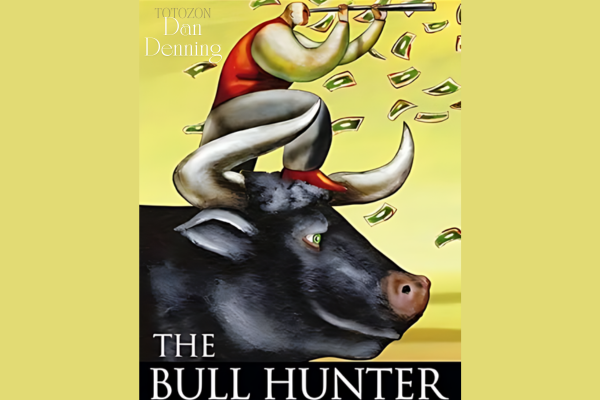-
×
 TradeCraft: Your Path to Peak Performance Trading By Adam Grimes
1 × $15.00
TradeCraft: Your Path to Peak Performance Trading By Adam Grimes
1 × $15.00 -
×
 Bond Market Course with The Macro Compass
1 × $15.00
Bond Market Course with The Macro Compass
1 × $15.00 -
×
 Advanced Spread Trading with Guy Bower - MasterClass Trader
1 × $15.00
Advanced Spread Trading with Guy Bower - MasterClass Trader
1 × $15.00 -
×
 The Hidden Order Within Stock Prices with Clay Allen
1 × $6.00
The Hidden Order Within Stock Prices with Clay Allen
1 × $6.00 -
×
 The A14 Weekly Option Strategy Workshop with Amy Meissner
1 × $23.00
The A14 Weekly Option Strategy Workshop with Amy Meissner
1 × $23.00 -
×
 Home Run Options Trading Course with Dave Aquino - Base Camp Trading
1 × $11.00
Home Run Options Trading Course with Dave Aquino - Base Camp Trading
1 × $11.00 -
×
 Matrix Spread Options Trading Course with Base Camp Trading
1 × $31.00
Matrix Spread Options Trading Course with Base Camp Trading
1 × $31.00 -
×
 Options Trading & Ultimate MasterClass With Tyrone Abela - FX Evolution
1 × $54.00
Options Trading & Ultimate MasterClass With Tyrone Abela - FX Evolution
1 × $54.00 -
×
 Crystal Ball Pack PLUS bonus Live Trade By Pat Mitchell - Trick Trades
1 × $20.00
Crystal Ball Pack PLUS bonus Live Trade By Pat Mitchell - Trick Trades
1 × $20.00 -
×
 Crypto Trading Academy with Cheeky Investor - Aussie Day Trader
1 × $13.00
Crypto Trading Academy with Cheeky Investor - Aussie Day Trader
1 × $13.00 -
×
 ICT Prodigy Trading Course – $650K in Payouts with Alex Solignani
1 × $15.00
ICT Prodigy Trading Course – $650K in Payouts with Alex Solignani
1 × $15.00
The Bull Hunter with Dan Denning
$6.00
File Size: Coming soon!
Delivery Time: 1–12 hours
Media Type: Online Course
Content Proof: Watch Here!
You may check content proof of “The Bull Hunter with Dan Denning” below:

The Bull Hunter with Dan Denning
In the world of financial markets, identifying lucrative investment opportunities amidst volatility is a prized skill. Dan Denning’s book, The Bull Hunter, offers valuable insights and strategies for navigating this complex landscape. In this article, we delve into the key concepts and takeaways from Denning’s work, providing a comprehensive guide to help you harness these strategies for your own investment success.
Introduction
Who is Dan Denning?
Dan Denning is a renowned financial author and investment strategist known for his contrarian approach to market analysis. With years of experience in global markets, Denning provides a unique perspective on identifying and capitalizing on investment opportunities.
What is The Bull Hunter?
“The Bull Hunter” is a book by Dan Denning that outlines strategies for finding investment opportunities in volatile markets. It focuses on identifying undervalued assets and taking advantage of market fluctuations to achieve long-term gains.
Core Concepts in The Bull Hunter
Contrarian Investing
What is Contrarian Investing?
Contrarian investing involves going against prevailing market trends, buying when others are selling, and selling when others are buying. This approach can uncover undervalued opportunities that the majority of investors overlook.
Benefits of Contrarian Investing
Contrarian investing allows investors to buy low and sell high, often leading to significant returns. It also provides a hedge against market bubbles and excessive optimism.
Global Investment Opportunities
Why Look Globally?
Global markets offer diverse investment opportunities that can help mitigate risk and enhance returns. Denning emphasizes the importance of looking beyond domestic markets to find undervalued assets.
Emerging Markets
Emerging markets often present high-growth potential due to rapid economic development. Denning highlights key regions and sectors that investors should consider.
Identifying Bull Markets
Characteristics of a Bull Market
A bull market is characterized by rising stock prices, increased investor confidence, and economic growth. Recognizing these signs can help investors capitalize on upward trends.
Spotting Bull Markets Early
Economic Indicators
Key economic indicators such as GDP growth, employment rates, and consumer spending can signal the onset of a bull market.
Market Sentiment
Investor sentiment, measured through surveys and market behavior, can provide clues about the direction of the market.
Strategies for Bull Hunting
Value Investing
What is Value Investing?
Value investing involves identifying undervalued stocks with strong fundamentals and holding them for long-term gains. Denning advocates for this approach to capitalize on market inefficiencies.
Key Metrics for Value Investing
Metrics such as price-to-earnings (P/E) ratio, price-to-book (P/B) ratio, and dividend yield help identify undervalued stocks.
Growth Investing
What is Growth Investing?
Growth investing focuses on companies with high potential for future growth. These companies often reinvest profits to expand their operations and market share.
Identifying Growth Stocks
Look for companies with strong revenue growth, innovative products, and expanding market presence.
Sector Rotation
What is Sector Rotation?
Sector rotation involves shifting investments between sectors based on their performance in different economic cycles. Denning explains how to use this strategy to maximize returns.
Timing Sector Rotations
Understanding economic cycles and market trends is crucial for successful sector rotation. Monitor sector performance and macroeconomic indicators to time your moves.
Risk Management
Diversification
Importance of Diversification
Diversification spreads risk across different assets, reducing the impact of any single investment’s poor performance.
How to Diversify
Invest in a mix of stocks, bonds, real estate, and commodities to achieve a balanced portfolio.
Stop-Loss Orders
What are Stop-Loss Orders?
Stop-loss orders automatically sell a security when it reaches a predetermined price, limiting potential losses.
Implementing Stop-Loss Orders
Set stop-loss orders based on your risk tolerance and market conditions to protect your investments.
Case Studies
Successful Bull Hunting Examples
Denning includes case studies in his book to illustrate successful bull hunting strategies. These examples provide practical insights into how these strategies work in real-world scenarios.
Lessons Learned
Analyzing both successes and failures helps refine investment strategies and avoid common pitfalls.
Conclusion
Why Read The Bull Hunter?
“The Bull Hunter” by Dan Denning offers a wealth of knowledge for investors looking to navigate volatile markets and uncover hidden opportunities. By adopting a contrarian approach and utilizing the strategies outlined in the book, you can enhance your investment portfolio and achieve long-term success.

FAQs
1. What is the main focus of The Bull Hunter?
The main focus of “The Bull Hunter” is to identify and capitalize on undervalued investment opportunities in volatile markets.
2. How does contrarian investing work?
Contrarian investing involves going against market trends, buying undervalued assets when others are selling, and selling overvalued assets when others are buying.
3. Why should investors consider global markets?
Global markets offer diverse opportunities that can help mitigate risk and enhance returns, providing exposure to high-growth regions and sectors.
4. What are some key metrics for value investing?
Key metrics for value investing include the price-to-earnings (P/E) ratio, price-to-book (P/B) ratio, and dividend yield.
5. How can sector rotation benefit investors?
Sector rotation allows investors to capitalize on different sectors’ performance during various economic cycles, maximizing returns by shifting investments accordingly.
Be the first to review “The Bull Hunter with Dan Denning” Cancel reply
You must be logged in to post a review.
Related products
Forex Trading
Forex Trading
Forex Trading
Forex Trading
Forex Trading
Forex Trading
The Complete Guide to Multiple Time Frame Analysis & Reading Price Action with Aiman Almansoori
Forex Trading
Forex Trading
Forex Trading
Forex Trading
















Reviews
There are no reviews yet.